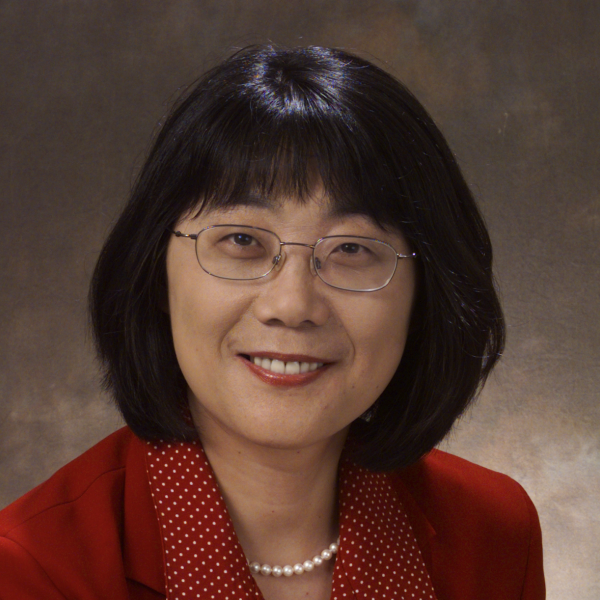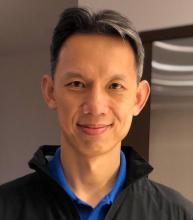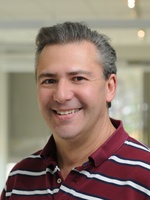Invited Speakers
KEYNOTE TALK 1: Context Based Learning and Its Applications

Distinguished Professor Aidong Zhang, State University of New York at Buffalo (Currently on leave at National Science Foundation)
ABSTRACT
Learning semantics based on context information has been researched in many research areas for decades. Context information can not only be directly used as the input data, but also sometimes used as auxiliary knowledge to improve existing models. In this talk, I will review the basic idea and techniques, and also introduce how context information can be utilized as the model input or incorporated into the model to enhance the performance or extend the domain of application as auxiliary knowledge. In addition, I will demonstrate how context based learning techniques can be applied in various applications.
SHORT BIO
Dr. Aidong Zhang is currently on leave from the State University of New York (SUNY) at Buffalo and serving as a program director in the Information & Intelligent Systems division of the Directorate for Computer & Information Science & Engineering, National Science Foundation. Dr. Zhang is a SUNY Distinguished Professor of Computer Science and Engineering. Her research interests include data mining/data science, bioinformatics, health Informatics, multimedia and database systems, and content-based image retrieval. She has authored over 290 research publications in these areas. She has chaired or served on over 160 program committees of international conferences and workshops, and currently serves on several journal editorial boards. Dr. Zhang is an IEEE Fellow.
KEYNOTE TALK 2: SEMANTIC COMPUTING: Why, What and How

Professor Phil Sheu, University of California, Irvine
ABSTRACT
Semantic Computing (SC) in brief is Computing based on Semantics (“meaning”, "context", “intention”). It addresses all types of resources including data, document, tool, device, process and people. A broader definition of Semantic Computing includes the computing technologies (e.g., artificial intelligence, natural language, software engineering, data and knowledge engineering, computer systems, signal processing, etc.), and their interactions, that may be used to extract or process computational content. This connection between content and the user is made via Semantic Analysis, which analyzes content with the goal of converting it to machine processable descriptions (semantics); Semantic Integration, which integrates content and semantics from multiple sources; Semantic Applications, which utilize content and descriptions to solve problems; and Semantic Interface, which interprets users' intentions expressed in natural language or other communicative forms. The reverse connection converts the intentions of users to create content via analysis and synthesis techniques. This talk introduces Semantic Computing based on its broader and narrower definitions, its relationship with Artificial Intelligence and other branches of Computer Science, and several case studies showing how it can be used to solve more complex problems.
SHORT BIO
Phillip C.-Y. Sheu is a professor of EECS, CS, and BME at the University of California, Irvine. He received his B.S. degree in EE from National Taiwan University, and MS and Ph.D degrees in EECS from the University of California at Berkeley. Dr. Sheu’s current research interests include semantic computing, robotic computing, and complex biomedical systems. He has published three books: Intelligent Robotic Planning Systems, and Software Engineering and Environment - An Object-Oriented Perspective, and Semantic Computing. He also has published extensively in object-relational data and knowledge engineering, semantic computing, robotic computing, and biomedical computing. He is the founder of the Institute for Semantic Computing and Robotic Computing (SC-RC), the IEEE International Conference of Semantic Computing (ICSC), the IEEE Computer Society Technical Committee on Semantic Computing (TCSEM), and the Knowledge Societies, an accredited member of UNESCO/USFUCA. He is the founding editor-in-chief of the International Journal of Semantic Computing (IJSC) and the Encyclopedia with Semantic Computing (ESC), and a co-founder of the IEEE International Conference of Multimedia Big Data (BigMM), the IEEE International Conference on Robotic Computing (ICRC), and the Bay Area Multimedia Forum (BAMMF).
KEYNOTE TALK 3: ANTICIPATORY SYSTEMS: The Role of Prediction in Complex Networks

Professor Lefteri H. Tsoukalas, Purdue University
ABSTRACT
Complex networks integrating information with production, transport, delivery and utilization of resources undergird most modern infrastructures. The theory of anticipatory systems, as proposed by the late Robert Rosen, provides an appropriate framework for the management of such networks. Planning and acting on the basis of anticipations is a familiar feature of human cognition but until recently rather absent from automatic control approaches. Advancements in network computing and communication enable us to manage and control on the basis of predictions if suitable attention is paid to the trade offs between accuracy and precision. Significant improvements in neural computing combined with the flexibility of fuzzy systems, supports the development of neurofuzzy architectures for anticipatory systems. We will review the history of anticipatory systems, analyze the role of exploiting the notion of parsimony in modeling and computational approaches, and expound on the potential of managing complex networks through the power of anticipation.
SHORT BIO
Professor L. H. Tsoukalas holds a PhD from the University of Illinois at Urbana-Champaign (1989) along with considerable engineering experience in power generation, transmission and distribution. He has held faculty appointments as professor and head of the School of Nuclear Engineering at Purdue University as well as at the University of Thessaly, Tohoku University, the University of Tennessee and Aristotle University. Dr. Tsoukalas has three decades of experience in developing smart instrumentation and control methodologies with over 200 research publications in the area including a book titled “Fuzzy and Neural Approaches in Engineering,” (John Wiley & Sons, New York, 1997). Dr. Tsoukalas has served in advisory and consulting positions for the International Atomic Energy Agency (IAEA); the Agency for Science, Technology and Research (ASTAR) of the Government of Singapore; and the US Department of Energy. Dr. Tsoukalas is a Fellow of the American Nuclear Society and the 2009 recipient of the Humboldt Prize, Germany’s highest honor for international scientists.
KEYNOTE TALK 4: Decision Guidance Systems: Languages, Algorithms, Applications

Professor Alex Brodsky, George Mason University
ABSTRACT
Decision Support Systems (DSS) are widely used to support organizational and personal decision-making in diverse areas such as engineering systems, finance, business, economics and public policy. They are becoming increasingly critical with the information overload from the Internet. While the scope of DSS is broad, Decision Guidance Systems (DGS) are a class of DSS geared to elicit knowledge from domain experts and provide actionable recommendations to human decision-makers, with the goal of arriving at the best possible course of action. Currently, the practice of building Decision Guidance (DG) Systems resembles developing database applications decades ago before the invention of the relational DBMS. DG applications are typically one-off and hard-wired to specific problems; require significant interdisciplinary expertise to build; are highly complex and costly; and are not extensible, modifiable, or reusable. Therefore, a paradigm shift for the development of DG systems is needed. The key idea is to introduce and develop Decision Guidance Management Systems (DGMS), which would allow fast and easily-extensible development of DG applications, similar to easy development of DB applications using DBMS. In this talk I overview my research toward this goal, and exemplify DG languages, algorithms and applications, including to manufacturing and power systems. This research is multidisciplinary and involves mathematical and constraint programming; AI tools such as machine learning; data and knowledge management; and formal languages and compilation..
SHORT BIO
Alex Brodsky is Professor in the department of Computer Science and Director of the Masters of Science Degree in Information Systems at George Mason University. He teaches classes in Database Management and Decision Guidance Systems, graduated 15 PhD students and currently advises other four. Alex’s current research interests include Decision Support, Guidance and Optimization (DSGO) systems; and DSGO applications, including to Energy, Power, Manufacturing, Sustainability and Supply Chain. He earned his Ph.D. and prior degrees in Computer Science and/or Mathematics from the Hebrew University of Jerusalem. Alex has published over 115 refereed papers, including five that received Best Paper Awards, in scholarly peer-reviewed journals, books and conference/workshop proceedings. For his research work related to DSGO systems, Alex received a National Science Foundation (NSF) CAREER Award, NSF Research Initiation Award, and funding from the Office of Naval Research (ONR), National Aeronautics and Space Administration (NASA), National Institute of Standards and Technology (NIST), and Dominion Virginia Power. Alex served in leadership roles in research conferences, including as Program Chair of IEEE International Conference on Tools with Artificial Intelligence (ICTAI-2013); Program Co-chair of the IEEE ICDE workshop on Data-Driven Decision Guidance and Support Systems (DGSS 2012, and DGSS 2013); General Vice Co-chair of the IEEE International Conference on Data Engineering (ICDE 2012); and Conference Chair of the Fifth International Conference on Principles and Practice of Constraint Programming (CP99). Prior to joining Mason in 1993, Alex worked at IBM T.J. Watson Research Center, at Israel Aircraft Industries and was an R&D; officer in the Computer Division of Communications, Electronics and Computer Corps, Israel Defense Forces. He also has start-up and commercialization experience, and is a member of ACM, IEEE, INFORMS and INSTICC.